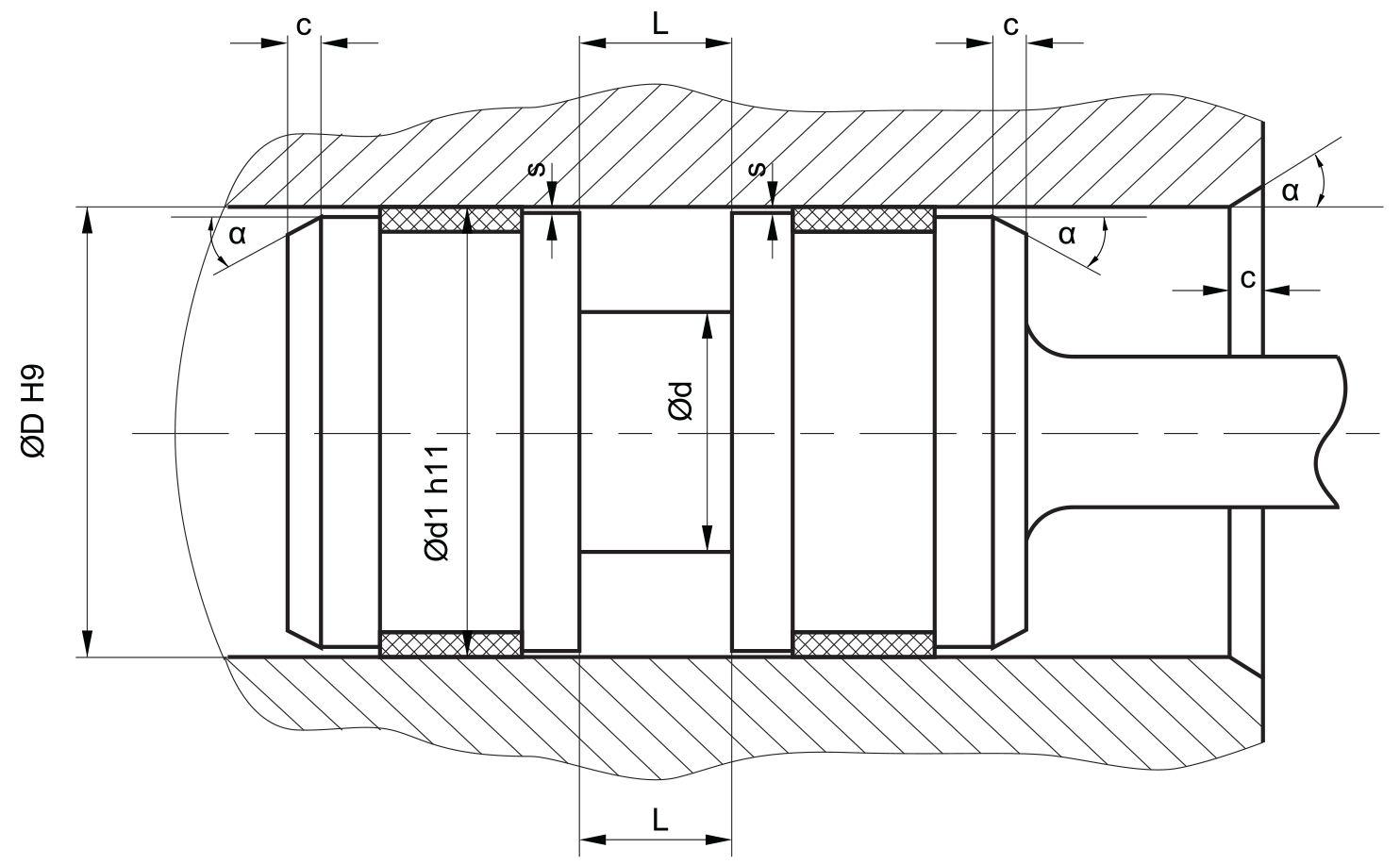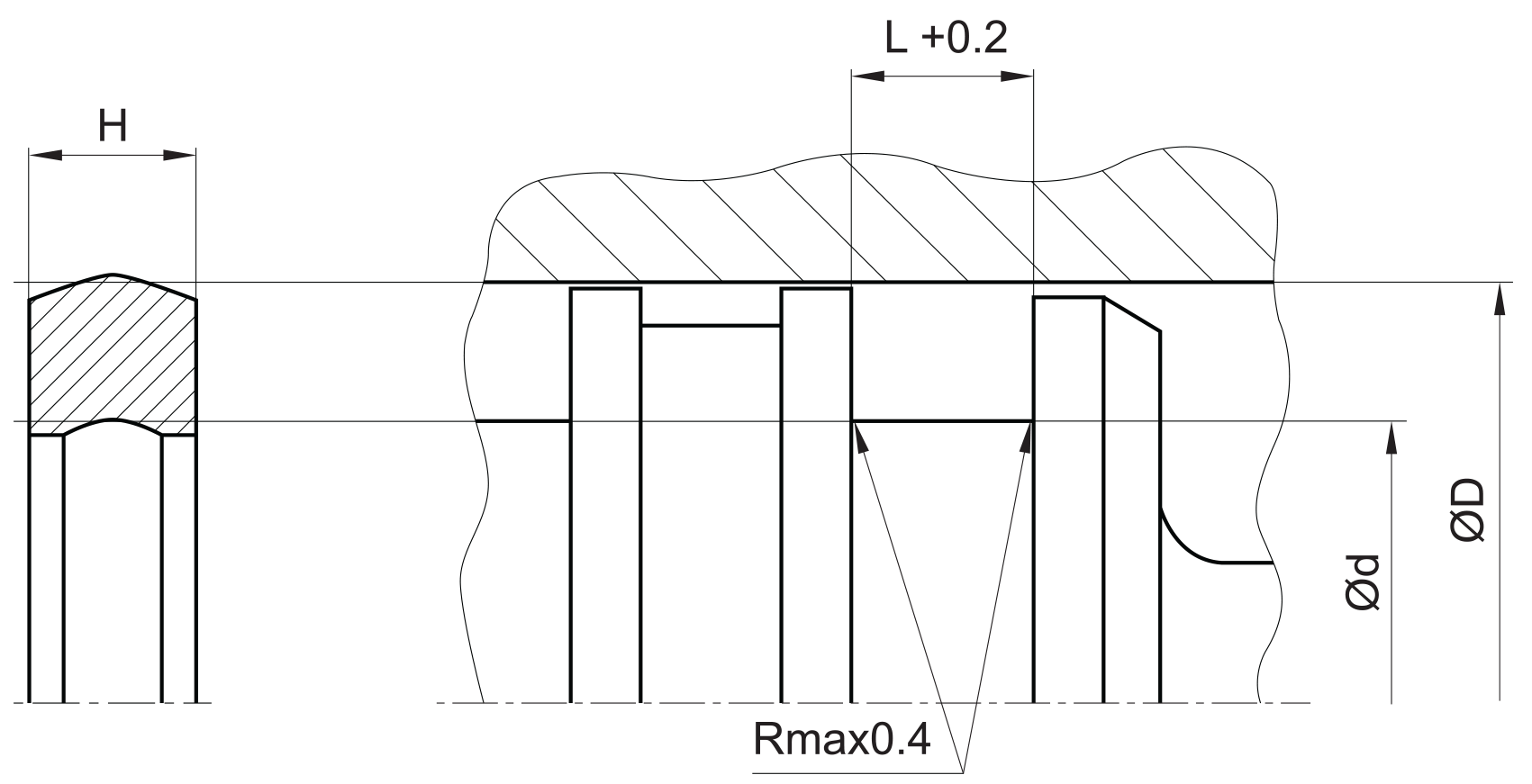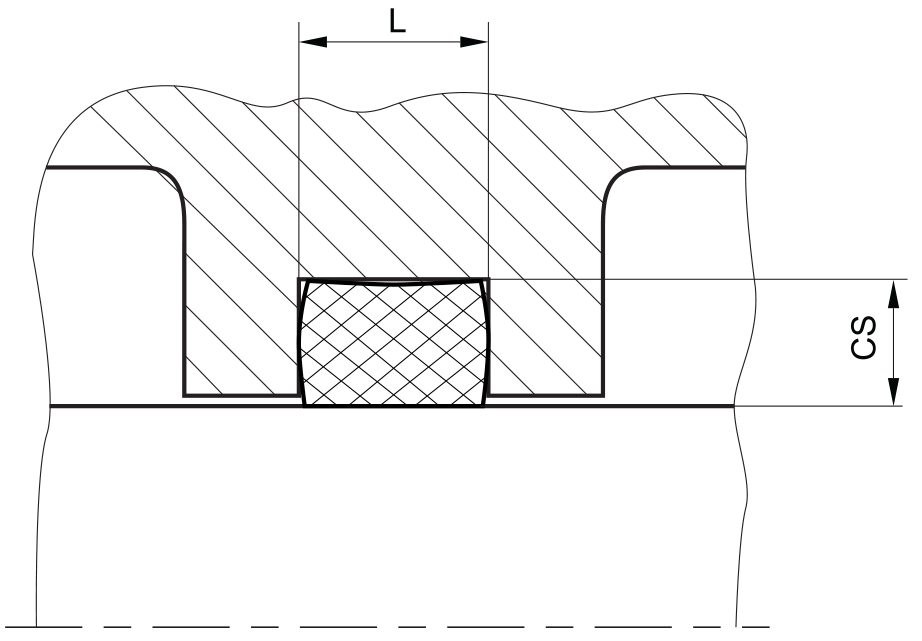

description
compact piston seal with almost no deadspots as required for applications in food and pharma industry, also commonly used as O-Ring replacement, because design with interference fit on outside diameter maintains non twisting indynamic applica- tions.
- asymmetric double-acting piston compact seal. the preload is achieved by the internal stress of the seal material.
- interference fit on the inside diameter.
- various materials are available for different purposes.
- snaps into simple grooves (see notes on installation).
- good sealing effect across a wide temperature range.
- for pressures up to 400 bar as a seal between pressurised spaces.
- good sealing in the low pressure range.
- excellent static sealing.
- only few dead spots.
- the housing grooves are same as housing grooves for o-rings (see “range of profile sizes”)
- no twisting in dynamic applications.
- space-saving desig
application
not bolded symbols; please consult our technical for application limitations
category of profile
machined or molded/standard/trade product.
double acting
the PS 35 seal is designed for use as a piston seal.
area of application: hydraulics
- static and dynamic seals in hydraulic systems.
- use in systems with O-ring grooves instead of O-rings in case of stability problems (twisting) or “pumping”.
- as substitution for piston composite glide rings, if easy cleaning is required (e.g. piston chargers in food industry).
- for food and pharma applications.
note
- this seal has the correct functioning dimensions only when mounted. in unmounted condition, the seal may appear too small.
- the ratio between nominal width and sealing height cs/H should not drop below a value of 1/1.25 (essentially according to ISO 5597
housings for piston and rod seals).
function
PS01 profiles are lip seals designed to seal pressurised space against the atmosphere or in case of back to back arrangement with intermedi- ate guidering to seal between two pressurised spaces, mainly for reciprocating movements. the design is based on application in standard hydraulic systems with conventional hydraulic oils. the operating parameters are as defined in the sealing data sheet and material data. requirements deviating from these parameters can be met to a certain degree by changing the geometry in the software program.
operating parameters & material
| material | temperature | max. surface speed | max. pressure 1 | hydrolysis | dry running | wear resistance |
| PU | -30 °C … +110 °C | 0,5 m/s | 400 bar (40 MPa) | – | + | ++ |
| HPU | -20 °C … +110 °C | 0,5 m/s | 400 bar (40 MPa) | – | + | ++ |
| GPU | -30 °C … +110 °C | 0,5 m/s | 400 bar (40 MPa) | – | + | ++ |
| LTPU | -50 °C … +110 °C | 0,5 m/s | 400 bar (40 MPa) | – | ++ | ++ |
| SPU | -20 °C … +110 °C | 0,5 m/s | 400 bar (40 MPa) | – | + | ++ |
the stated operation conditions represent general indications. it is recommended not to use all maximum values simultaneously. surface speed limits apply only to the presence of adequate lubrication film.
1 pressure ratings are dependent on the size of the extrusion gap.
++ … particularly suitable o … conditional suitable
+ … suitable – … not suitable
for detailed information regarding chemical resistance please refer to our „list of resistance“. for increased chemical and thermal resistance rubber
materials in other sealing systems are to be preferred, attention should be paid to restrictions for pressure range and wear resistance. for higher gliding speeds another system should be used (e.g. PTFE materials).
gap dimension
| operating pressure | cs = (ØD – Ød)/2 mm | |||||
| 4 | 5 | 7.5 | 10 | 12.5 | 15 | |
| safe extrusion gap (mm) | ||||||
| 100 bar (10 MPa) | 0.62 | 0.75 | 0.90 | 1.15 | 1.35 | 1.50 |
| 200 bar (20 MPa) | 0.27 | 0.36 | 0.45 | 0.55 | 0.65 | 0.75 |
| 300 bar (30 MPa) | 0.17 | 0.19 | 0.21 | 0.23 | 0.25 | 0.26 |
| 400 bar (40 MPa) | 0.05 | 0.07 | 0.10 | 0.13 | 0.15 | 0.17 |
important note:
the above data are maximum value and can’t be used at the same time. e.g. the maximum operating speed depend on material type, pressure, tem- perature and gap value. temperature range also dependent on medium.
the table applies to an operating temperature of 70 °C.
surface quality
| surface roughness |
Rtmax (μm) |
Ra (μm) |
| sliding surface | ≤2,5 | ≤0,05-0,3 |
| bottom of groove | ≤6,3 | ≤1,6 |
| groove face | ≤15 | ≤3 |
tolerance recommendation
| seal housing | tolerances |
| Ød | h9 |
| ØD | H9 |
mode of installation
for inside diameters of 40mm and more, the seal can generally be slipped over the piston and snapped into closed grooves. due to occuring de- formation force at installation, assembly aid tools are to be used for large cross-sections. the material deformation should not exceed the value of 20%, otherwise the permanent deformation would be too large.
recommended mounting space:

insertion chamfer:
in order to avoid damage to the piston seal during installation, the piston and the housing is to be chamfered and rounded as shown in the “recommended mounting space” drawing. the size of chamfer depends on the seal type and profile width.
| cs (mm) | c (mm) | |
| α = 15⁰ … 20⁰ | α = 20⁰ … 30⁰ | |
| 4 | 3.5 | 2 |
| 5 | 4 | 2.5 |
| 6 | 4.5 | 3 |
| 7.5 | 5 | 4 |
| 10 | 6 | 5 |
| 12.5 | 8.5 | 6.5 |
| 15 | 10 | 7.5 |
| 20 | 13 | 10 |
instead of a chamfer, the piston can also be designed with a radius. recommended size of the radius is equal to size of chamfer (R=c).
seal & housing recommendations
please note that we are able to produce those profiles to your specific need or any non standard housing. for detail measurements, please see Jet seal pars catalog…

we recommed the following values for cross sections and housing heights in accordance to the diameter range:
| ØD [mm] | Ød [mm] | L [mm] | cs = (ØD – Ød)/2 [mm] |
| 5 ~ 24,9 | ØD – 8 | 6 | 4 |
| 25 ~ 49,9 | ØD – 10 | 7 | 5 |
| 50 ~ 74,9 | ØD – 12 | 8 | 6 |
| 75 ~ 149,9 | ØD – 16 | 10 | 7.5 |
| 150 ~ 299,9 | ØD – 20 | 12 | 10 |
| 300 ~ 500 | ØD – 24 | 18 | 12.5 |
| 500 ~ 750 | ØD – 30 | 20 | 15 |
| > 750 | ØD – 40 | 26 | 20 |
use cross sections below 4mm only for static applications (O-Ring replacement).
fitted:

don’t hesitate to contact our technical department for further information or for special requirements (temperature, speed etc.), so that suitable materi- als and/or designs can be recommended.
